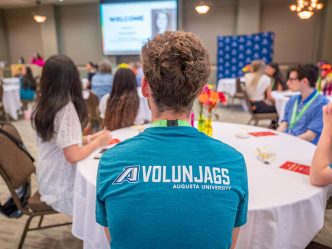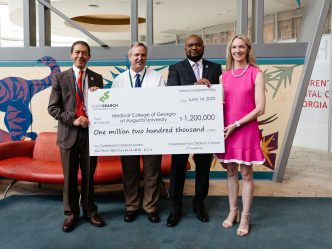When Anna Grace Tully awakened after a three-hour spine surgery at Children’s Hospital of Georgia, she sensed that something had changed.
“I was in the ICU, and my mom was holding my hand. Then she let go to get me a sip of water, and I freaked out,” Anna Grace said. “I was like, ‘No! Don’t let go. It’s so warm, and it feels so good.’”
Crystal Tully was certainly surprised by the request, but she complied. After all, surgery can be a traumatic experience.
“I know it confused my mom for me to ask her, but the warmth of her hand around mine was so comforting,” Anna Grace said.
Although she couldn’t readily explain it, Anna Grace definitely felt a difference.
“She said, ‘Mama, I get it now. Hugs – I get hugs; they’re warm and soothing.’”
“Before that day, it (hand-holding) had just been hard and cold. I didn’t like it. But, my mom, her grasp… There’s something about how that warmth transforms to love when it is someone special to you. That was definitely the first time I had ever felt that before,” Anna Grace said.
At first her mother dismissed the clingy behavior as medicine-induced. But well after the anesthesia wore off, Anna Grace began to crave this newfound feeling.
“She began asking people to touch her and to hug her,” Tully recalls. “And if you know Anna, she has never wanted that in her whole life. She said, ‘Mom, lay in bed with me.’ So, I did.”
Then came the words Tully said she will never forget.
“She said, ‘Mama, I get it now.’ And I said, ‘You get what?’ I wasn’t sure what she meant. And she said, ‘Hugs – I get hugs; they’re warm and soothing.’”
The Tullys found out that day that their teenage daughter had lived her entire life with sensory dysfunction, and none of them knew. Anna Grace went into the operating room at Children’s Hospital to have connective tissue cut away from her spinal cord. She came out with a sharp, new outlook on life.
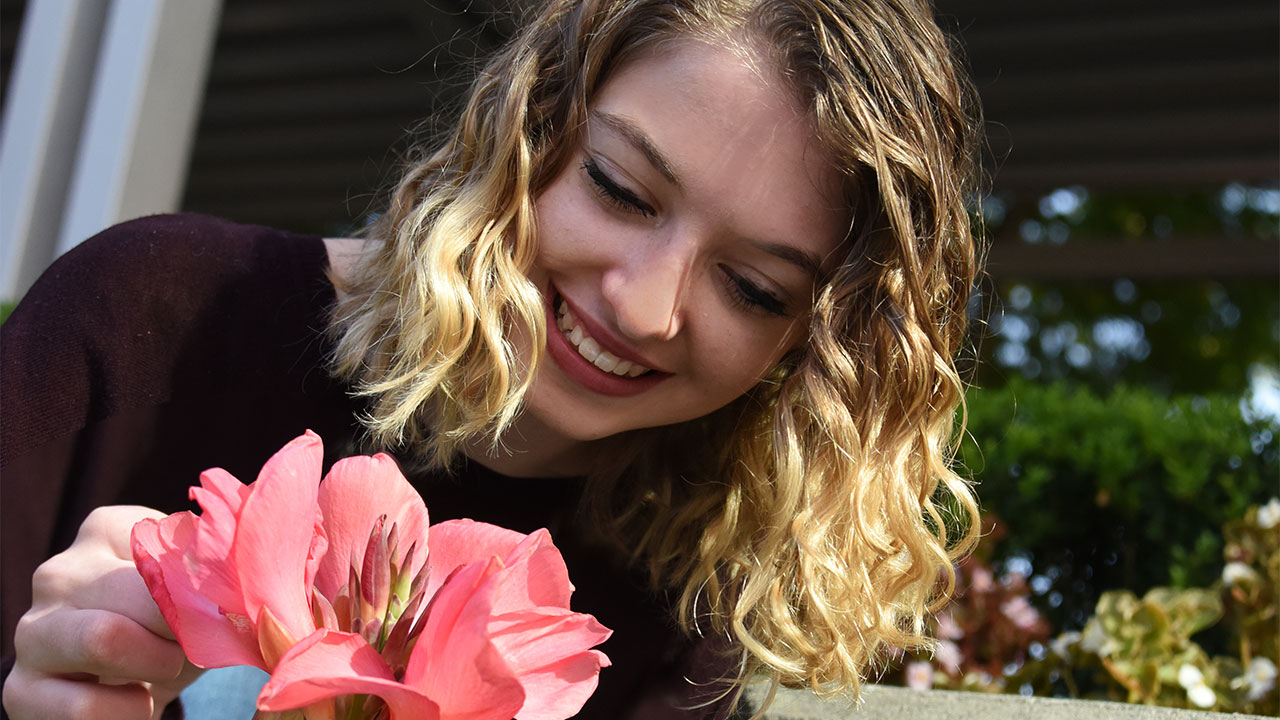

“What we try to do with surgery is either stabilize a condition or get it back to where it was before,” said pediatric neurosurgeon Dr. Ian Heger. “However, when you have a child who has never experienced certain things and doesn’t even know that she was missing them, you can’t anticipate results like that.”
“This was totally unexpected,” Tully said. “Dr. Heger said he couldn’t repair the damage that had been done over the years, but he could prevent more damage from happening. None of us expected this life-changing blessing.”
Earlier this year, Heger diagnosed Anna Grace with tethered cord syndrome.
“We all have a band of connective tissue that goes from the bottom of our spinal cord and inserts itself into the tailbone,” Heger explained. “Generally, it has a certain amount of elasticity like a rubber band to allow for growth of the spine as people age.”
But Anna’s cord was tethered, or attached, in places where it should not be. Essentially, the cord was held fast in her lower back, causing the spine to pull down on her skull and brain.
Anna Grace’s best friend, Kara, described it this way: “It was like her bottom and her brain were playing tug of war with her spine.”
“It was like her bottom and her brain were playing tug of war with her spine.”
This pressure can cause many symptoms – some are even debilitating.
“Growing up, Anna was always a bit clumsy,” Tully said. “She had some bladder control issues and difficulty walking. She also complained about tingling legs.”
But it wasn’t until her mother found her convulsing on the bathroom floor at church in February that the Tullys knew that Anna Grace was not well.
“It was like a Mack truck. It came out of nowhere and just snowballed from there,” Tully said.
In January, Anna Grace was competing in swim meets for Lakeside High School, and by the end of February, she was in a wheelchair.
“We had no idea what was happening with her.”
The Tullys sought medical help, but answers eluded them.
“So we shared Anna’s troubles in a Facebook post, and we had faith that someone out there would see it, and point us in the right direction,” said Tully.
Friends tagged Dr. Heger’s wife in the post and she reached out immediately and told the Tullys that her husband could help. Heger is the only pediatric neurosurgery specialist in the region.
“It’s very likely that Anna could have been paralyzed had we not looked into this more closely,” said Tully.
“Anna has some underlying conditions that put her more at risk for (tethered cord), but in a way that is very hard to detect for most physicians,” said Heger. “It really takes an appreciation for the condition and knowing how to look for it.
“From the neck down, it was like pins and needles. It didn’t feel right, but it was my normal. I knew the wall was hard and the blanket was soft, but I didn’t know there were different kinds of hard or soft.”
“So, not only did we make her better, but we helped Anna Grace experience the world in a way that she never has before,” said Heger. “This is why we (doctors) get up in the morning. We want to make kids’ lives better. For us to be a part of this, is incredible.”
“Before surgery, Anna felt everything on the most basic level. But now, she can really feel the details of life,” Tully said.
Anna Grace explains how “prickly” her life was before surgery.
“From the neck down, it was like pins and needles. It didn’t feel right, but it was my normal. I knew the wall was hard and the blanket was soft, but I didn’t know there were different kinds of hard or soft.”
Anna Grace, a sophomore, has always been an avid reader. But now, when she touches the pages in a book, she can distinguish between the different textures of paper or feel the printed letters on a page in a way she never could.
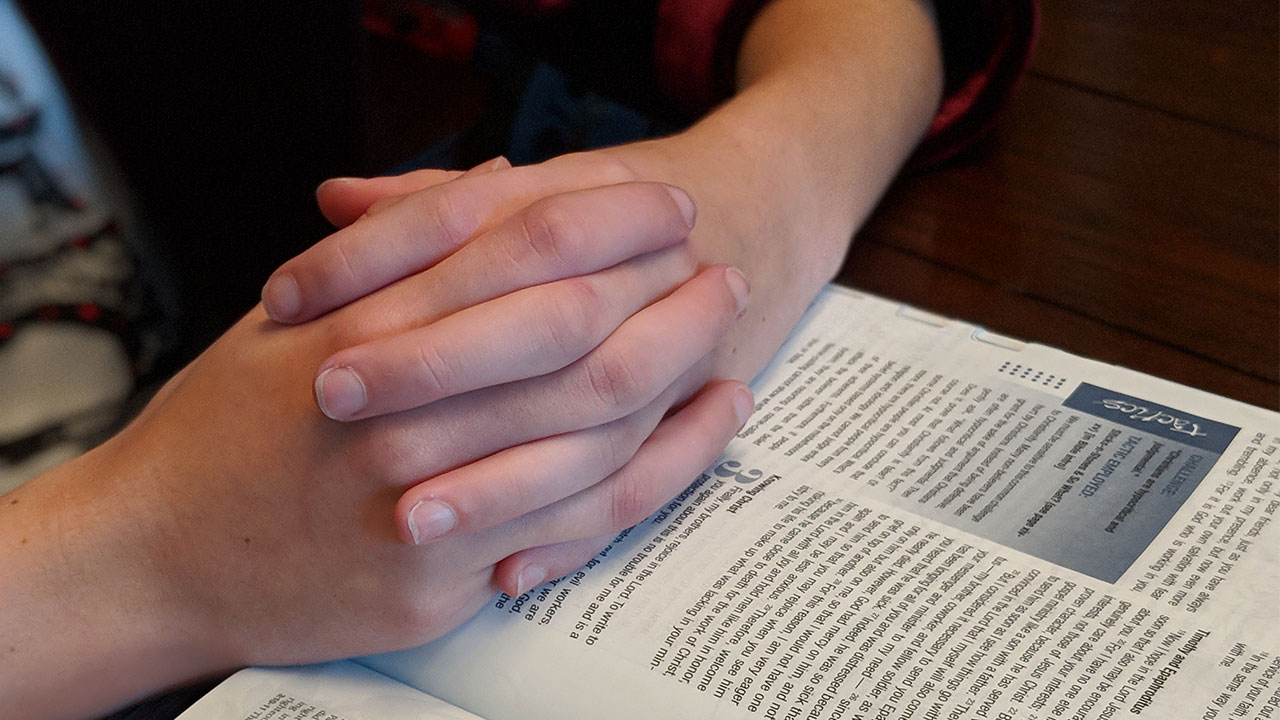

“Everything I felt I gauged by colors and heights, and I’m starting to realize that there are many things that are the same height or color, or look the same, but they don’t feel the same at all,” she said.
Anna Grace also discovered she hadn’t always used the most fitting adjectives in her conversations.
“I use ‘pointy,’ and ‘sharp’ a lot, when it’s probably not true. Things can be pointy and not sharp; and things look bumpy to me,” she explained. “I always thought you could use fuzzy, silky, and soft interchangeably. But I now know the cat is not silky, and my shirt is not fuzzy,” she laughed.
“It feels amazing to be hugged… It’s such a blessing, because I can never remember a time where I ever thought, ‘I just want to hug my mom.’”
Anna had grown used to compensating to keep up with everyone else. She says she would carefully observe others and slowly pick up on using certain words just by listening to people. However, she never really understood why they used so many different words to describe things.
It’s a surprise outcome that Heger describes as “seeing the world in grayscale, then all of a sudden waking up to spectacular Technicolor.”
“It feels amazing to be hugged,” said Anna Grace. “That’s why I wanted hugs from my mom. It’s such a blessing, because I can never remember a time where I ever thought, ‘I just want to hug my mom.’”
But not all of Anna’s new sensations have been warm and fuzzy. In fact, she had to take a shower wearing socks the first few times after surgery, because the pressure of the water spray against her skin for the first time was so overpowering.


Grass is also a challenge, Anna Grace admits.
“There is a video of me touching grass for the first time, and I can remember that really well. I was so scared and really confused. I wanted to like it. I mean, grass is such a ‘romantical’ thing, but it was gooey and cold. My feet were sinking, yet it was supporting me. At first I thought I liked it. Then I didn’t. And now I won’t go near it without shoes. I much prefer concrete,” Anna Grace said.
Though she is well past the developing infant stage, her mom says the term “rebirth” seems to fit.
“If you think back to when kids are babies and you put them in the grass or the bath for the first time, they cry; because they are experiencing new things for the first time. When it comes to sensitivities, I have to remind myself that another 15-year-old will be ok with this, but Anna may not be.
“Looking forward, I think that’s going to be a challenge for her – when she is in new situations and no one knows the old Anna, and she has to explain her reaction and what life was like before,” said Tully.
“Everything just came together. They just cared. We have been so blessed here.”
But, she says appointments with Dr. Robert Pendergrast in the mind-body clinic at Children’s Hospital are helping Anna Grace cope with all these new sensations.
“It’s medical hypnosis, so at first, Anna was like, ‘Uh, no.’ But she has had an amazing experience,” Tully said. “It really helps her with the anxiety she feels as her senses are waking up and experiencing things that are overwhelming.”
Tully said she is thankful for the support she has found at Children’s Hospital of Georgia.
“Everything just came together. They just cared. We have been so blessed here.”
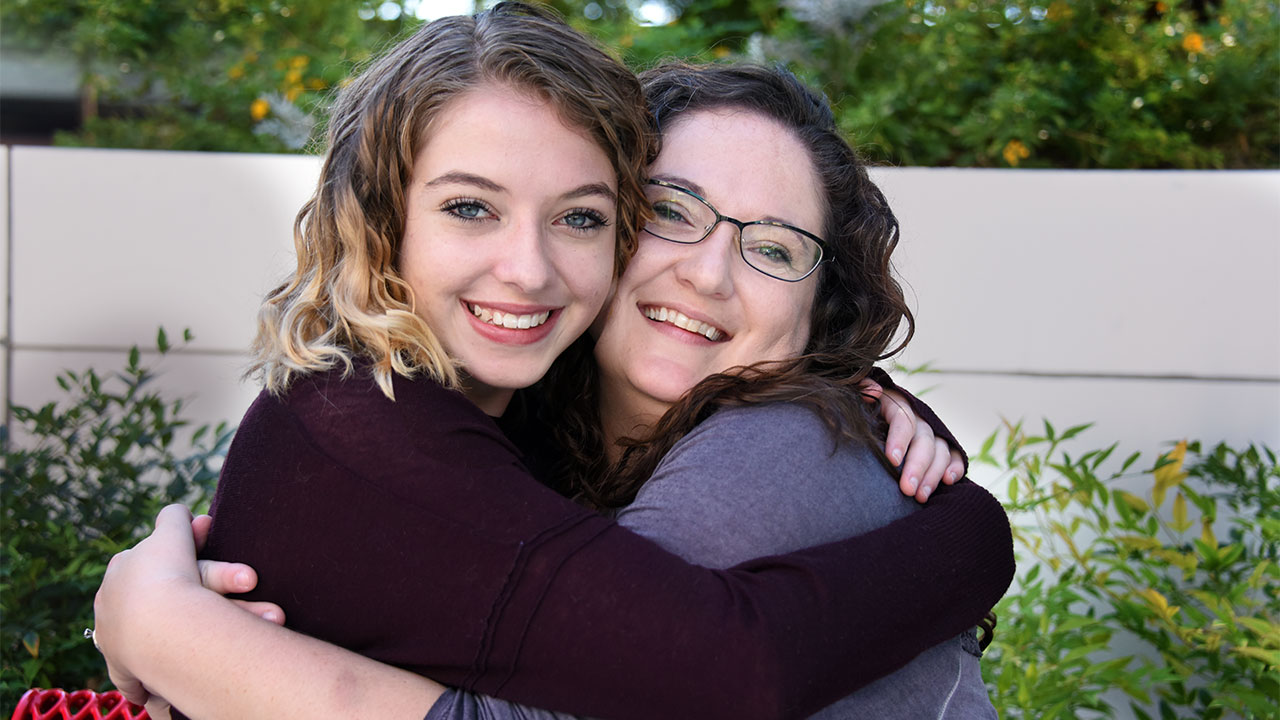

 Augusta University
Augusta University


